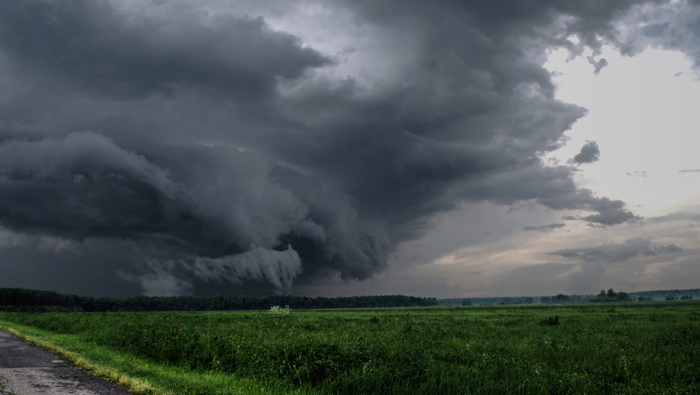There are dark storm clouds on the horizon. Commodities producers, buyers and traders may be eyeing them nervously, aware that when the storm breaks, a deluge of regulations and supply chain demands will pour down on them. Now is the time for firms to ensure they are aware of the sustainability characteristics of their operations and supply chains, so that risks and new expectations can be managed well. Those who do may find they don’t just weather the storm but find rich opportunities as the world moves towards net zero.

Author Mark Jeavons
Head of Sustainability View profile
Disclosure demands
These particular clouds have been on the horizon for a while. The EU’s Sustainable Finance Disclosure Regulation (SFDR) was adopted in 2019, with the first stage of application in March 2021. However, it was January 2023 when it really began to bite, with the launch of the second phase which tightened the standard of reporting demanded of financial institutions. Discussions are underway for further refinement.
Commodities businesses tend to be capital intensive and demands placed on financial institutions for better sustainability reporting will quickly impact commodities firms. However, it won’t just be financiers demanding more reporting from commodities firms, it will be their buyers and suppliers, too. The EU’s Corporate Sustainability Reporting Directive (CSRD), also launched in January 2023, requires businesses operating in or exporting to the EU to publish environmental and social information across their entire supply chain.
Europe is a leader in this regard, but not an outlier. The G20-launched Taskforce for Climate-Related Financial Disclosures (TCFD) framework sets global, cross-sector standards for firms’ climate-related disclosures; this includes reporting on emissions, climate and transition risks, governance and the strategies adopted to manage the impact of risks and benefits from opportunities. The TCFD has support from more than 3,900 organisations, spanning 101 countries and accounting for a combined market capitalisation of $26 trillion.
It seems inescapable then, that commodities firms will need to ramp up reporting on their operations’ sustainability footprint – but merely reporting won’t be enough. Change will be demanded too.
Counting the cost of carbon
Carbon pricing is not new but, historically, low prices have limited its impact on commodities markets. In the EU Emissions Trading Scheme (ETS), allowances (EUAs) traded under $10 per tonne for almost a decade – too low to incentivise deep decarbonisation. However, carbon prices for EUAs have started to move higher over the last few years.
In theory, carbon pricing encourages the easiest, cheapest decarbonisation actions to be taken first, e.g. substituting coal power generation (made expensive by carbon prices), for renewables. This of course affects commodities markets, lowering demand for some materials (coal) and raising it for others (e.g. steel for wind turbines). However, much higher carbon prices will be needed, along with government support, to decarbonise some of the remaining big-ticket items, which will have seismic impacts on commodity markets.
These are the hard-to-abate, expensive to eliminate emissions – those involved in sectors such as steel, ocean freight and ammonia. Current thinking is that these sectors will rely on hydrogen to decarbonise, which though the most abundant element in the universe, is fiendishly expensive to produce. CRU estimates that carbon prices will need to rise above $200 per tonne to drive that shift at scale. Considering that at the time of writing, EUAs are around $80 per tonne, there appears to be some way to go. However, we forecast that prices will top $150 per tonne by 2030.
Given that major decarbonisation actions – such as re-tooling a steel plant to use hydrogen – are often major capitalintensive projects, 2030 is uncomfortably close. The trajectory of carbon prices in Europe, and the acceleration of policies to green economies globally, represents a mounting pressure that should spur commodities firms to action sooner rather than later.
The great green policy wave
Direct regulatory support has the potential to greatly accelerate the energy transition. For example, headlines have been dominated by Joe Biden’s Inflation Reduction Act (IRA).
While the IRA is a significant increase in ambition that will likely reduce US emissions substantially, more will need to be done if the USA’s climate target for 2030 greenhouse gas (GHG) emissions are to be reduced by 50-52% below 2005 levels by 2030, the USA’s current climate target.
For example, the 45Q tax credit of $85 per tonne for CCS is too low to fully incentivise projects according to CRU analysis – at least $125 per tonne would be required for hydrogen, and $200 per tonne for other applications. However, what the IRA did do is spur a global scramble to match the level of ambition and, following that, there is a renewed focus on bilateral cooperation to accelerate the transition, notably from Europe.
In March 2023, Joe Biden, and the President of the European Commission, Ursula von der Leyen, met and stressed the need for policy alignment, and to make any incentive regimes mutually reinforcing. The same month saw Canada launch its own financial support package for green-tech, with France following in May, and South Korea is in the process of doing the same.
It is fair to say that we are seeing a renewed invigoration of the global energy transition spurred by an influx of legislation.
Mineral movements
At the same March meeting, the USA and EU announced cooperation on boosting domestic production and processing for the commodities that would underpin the energy transition, helping to lower emissions and reduce labour abuses. Likewise, the other G7 countries Canada, Australia and the UK are similarly revising their critical mineral strategies, informed by cost, sustainability and geopolitical concerns.
This won’t be easy. For example, the EU has set a benchmark of at least 40% of annual consumption for processing critical materials, but today CRU estimates it processes around 14% of nickel – less than half the target.
We may be witnessing the start of a G7 green-tech club, with coordinated policy to protect the security of supply chains of critical minerals. Whether or not that comes to pass, commodities producers are going to have to adapt. To at least some degree, they are likely going to have to increase production within these territories, which tend to carry higher labour, regulation and operational costs, plus there will be a great deal of scrutiny on local environmental impacts, such as effects on water supply and biodiversity. A Taskforce for Nature-Related Financial Disclosures [TNFD] is due to follow hot on the heels of TCFD.
Don’t gamble on delay
In our opinion, the unnegotiable realties of climate change will mean that these trends are more likely to accelerate than be delayed. However, even if a commodity producer were to pin its hopes on delay, it would be mistaken to do so. Delay would only mean that greater and faster emissions cuts would be demanded at a later date, and given these are likely to be in the hard-to-abate sectors we have described, that would hit commodities sectors extremely hard.
For this reason and the others we have outlined, commodities firms are running out of time to get ahead of the sustainability agenda. Pressure so far may have been relatively ‘soft-touch’, but in reality we are in the eye of a storm that will transform commodities markets worldwide. However, it need not be a negative thing – those who successfully adjust their strategies may see huge opportunities and competitive advantage. The foundation for good strategy though is understanding: understanding of commodity and carbon markets, of the policy outlook and the intricate web of interconnected causes and effects that move along the energy transition.
CRU Group’s new Sustainability Services combine expertise on commodities, policy and regulation, emissions trends, green tech and carbon markets to support commodities businesses in navigating the energy transition.
This article, authored by Mark Jeavons, Head of Sustainability, CRU Group, was first published in Aluminium International Today on 29th November.
Explore this topic with CRU
Author Mark Jeavons
Head of Sustainability View profile